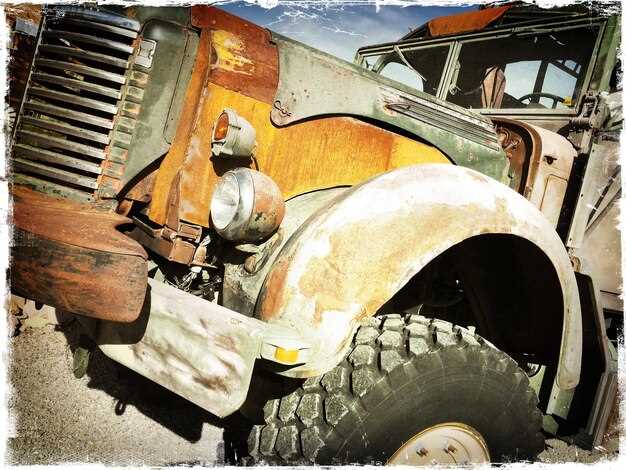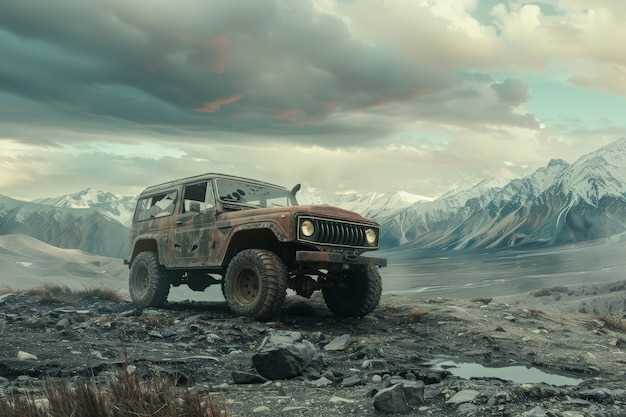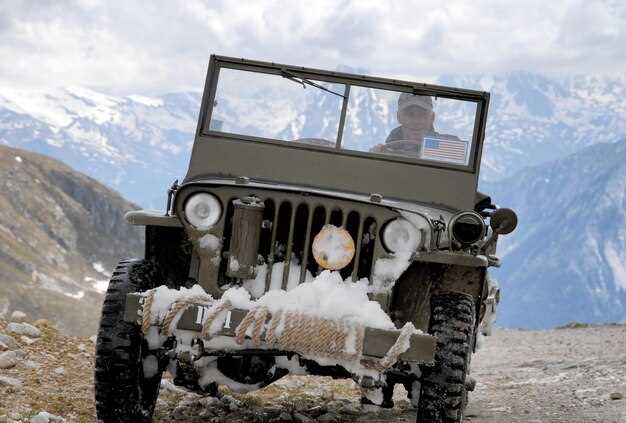The evolution of the Jeep brand over the decades


The history of the Jeep brand is a remarkable journey that reflects both innovation and adaptability in the automotive industry. Established during World War II, Jeep quickly became synonymous with ruggedness and off-road capability. As the decades progressed, the brand underwent significant transformations, evolving its identity while remaining true to its roots in adventure and exploration.
From the iconic Willys MB, which served as a military workhorse, to the introduction of the civilian Jeep models in the 1940s, the brand’s early years were marked by a commitment to function over form. However, as consumer preferences shifted in the 1970s and 1980s, Jeep responded by integrating comfort and style into its vehicles, broadening its appeal. This pivotal shift in the brand’s strategy set the stage for its enduring legacy in the crossover and SUV markets.
Throughout its history, Jeep has faced numerous challenges, including changes in ownership and market demands. Yet, the brand has consistently reinvented itself, introducing popular models like the Grand Cherokee and Wrangler. Today, Jeep stands as a testament to resilience in the automotive landscape, representing both a storied history and a modern vision that combines technology with the spirit of adventure.
Military Origins: The Birth of the Jeep Brand in World War II

The Jeep brand has its roots deeply embedded in military history, emerging during World War II as a crucial asset for the Allied forces. The iconic vehicle was designed to meet the demanding requirements of the battlefield, emphasizing versatility, durability, and off-road capabilities.
In 1940, under the urgent need for a lightweight reconnaissance vehicle, the U.S. Army commissioned several manufacturers to develop a prototype. The Willys-Overland Motor Company, along with Ford, began working on what would become the prototype model known as the Willys MB. This vehicle was characterized by its 4×4 capability, flat fenders, and distinctive seven-slot grille, elements that would become synonymous with the Jeep brand.
By 1941, the prototype was finalized, and mass production commenced. The Jeep quickly became an essential component of military operations, transporting troops, supplies, and equipment across rugged terrains. Its reliability in various conditions earned it a reputation that transcended military use, paving the way for civilian adoption after the war.
As the war progressed, over 600,000 units of the Jeep were produced, making it one of the most recognizable vehicles of the era. This born-from-battle vehicle symbolized freedom and mobility, and its robust design set the stage for the post-war evolution of the Jeep brand into a civilian powerhouse.
In summary, the origins of the Jeep brand, rooted in World War II, showcase the vehicle’s pivotal role in military operations and its lasting impact on automotive culture. The transition from a military tool to a celebrated brand identity is a testament to its enduring legacy and adaptability.
Iconic Models: A Look at Jeep’s Most Influential Vehicles Over the Years

The Jeep brand has a rich history characterized by innovation and resilience, with several models leaving a lasting impact on the automotive landscape. Here’s a closer look at some of the most influential vehicles that have shaped Jeep’s legacy:
-
Jeep Willys MB (1941)
The original military Jeep, the Willys MB, played a crucial role during World War II. Its ruggedness and versatility set the standard for all-terrain vehicles, establishing Jeep as a brand synonymous with adventure and capability.
-
Jeep CJ Series (1945-1986)
Building on the success of the Willys MB, the CJ (Civilian Jeep) series transitioned from military use to civilian life. These models introduced features like a wider stance and better comfort, creating a foundation for recreational off-roading.
-
Jeep Wrangler (1986-present)
A direct descendant of the CJ series, the Wrangler became a symbol of off-road capability and lifestyle. Its iconic design, removable doors, and foldable windshield became defining characteristics, fostering a loyal community of enthusiasts.
-
Jeep Cherokee (1984-present)
The Cherokee introduced unibody construction to the SUV segment, merging on-road comfort with off-road capability. Its success helped establish Jeep as a leader in the SUV market during the 1990s.
-
Jeep Grand Cherokee (1992-present)
The Grand Cherokee redefined luxury in SUVs, combining rugged performance with upscale features. This model expanded Jeep’s appeal beyond off-road enthusiasts to families and luxury buyers, significantly extending the brand’s reach.
These iconic models represent pivotal moments in Jeep’s history, each contributing uniquely to the brand’s evolution. They not only defined what a Jeep vehicle should be but also influenced the broader automotive industry, establishing a legacy that continues to inspire vehicle development today.
Modern Transformations: How Jeep Adapts to Changing Consumer Demands
The Jeep brand has a rich history that dates back to the 1940s, renowned for its rugged vehicles designed for off-road capabilities. As consumer preferences evolve, Jeep has adeptly transformed its lineup to meet modern expectations while staying true to its roots. The transition from a utilitarian image to a more lifestyle-oriented brand signifies its adaptability in a competitive market.
One of the most significant changes is the introduction of more fuel-efficient and eco-friendly models. The emergence of hybrid and electric vehicles represents a response to increasing environmental awareness among consumers. The Jeep Wrangler 4xe, for instance, combines the brand’s legacy of adventure with sustainable technology, allowing drivers to embrace off-roading while reducing their carbon footprint.
Furthermore, Jeep has expanded its offerings to include more family-friendly options, catering to the practical needs of modern consumers. The Jeep Grand Cherokee has evolved into a spacious SUV equipped with advanced safety features and luxurious amenities. This shift reflects an understanding of consumer demand for versatile vehicles that can effortlessly transition from urban environments to rugged terrains.
Technological advancements have also played a crucial role in Jeep’s transformation. The integration of infotainment systems, smartphone connectivity, and advanced driver-assistance features enhances the driving experience and aligns with the expectations of tech-savvy customers. These enhancements ensure that Jeep remains relevant in a rapidly changing automotive landscape.
In summary, Jeep’s modern transformations showcase its commitment to adapting to changing consumer demands. By blending its historical legacy with innovation and contemporary consumer preferences, the brand continues to thrive, promising adventure and practicality in every model.
